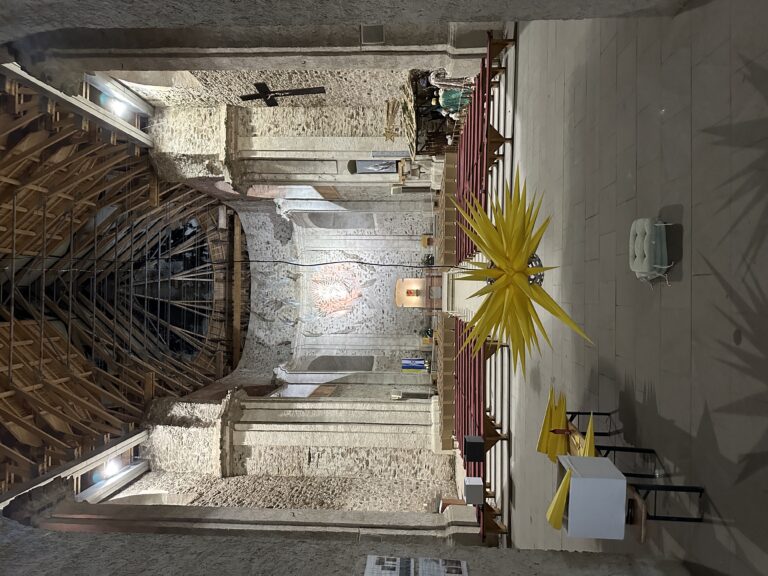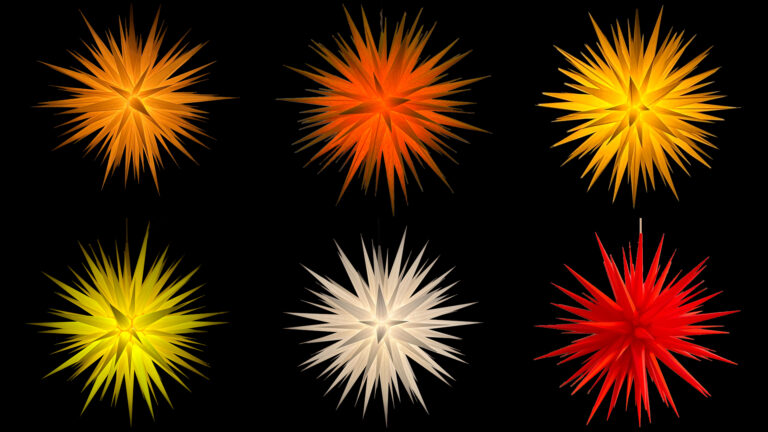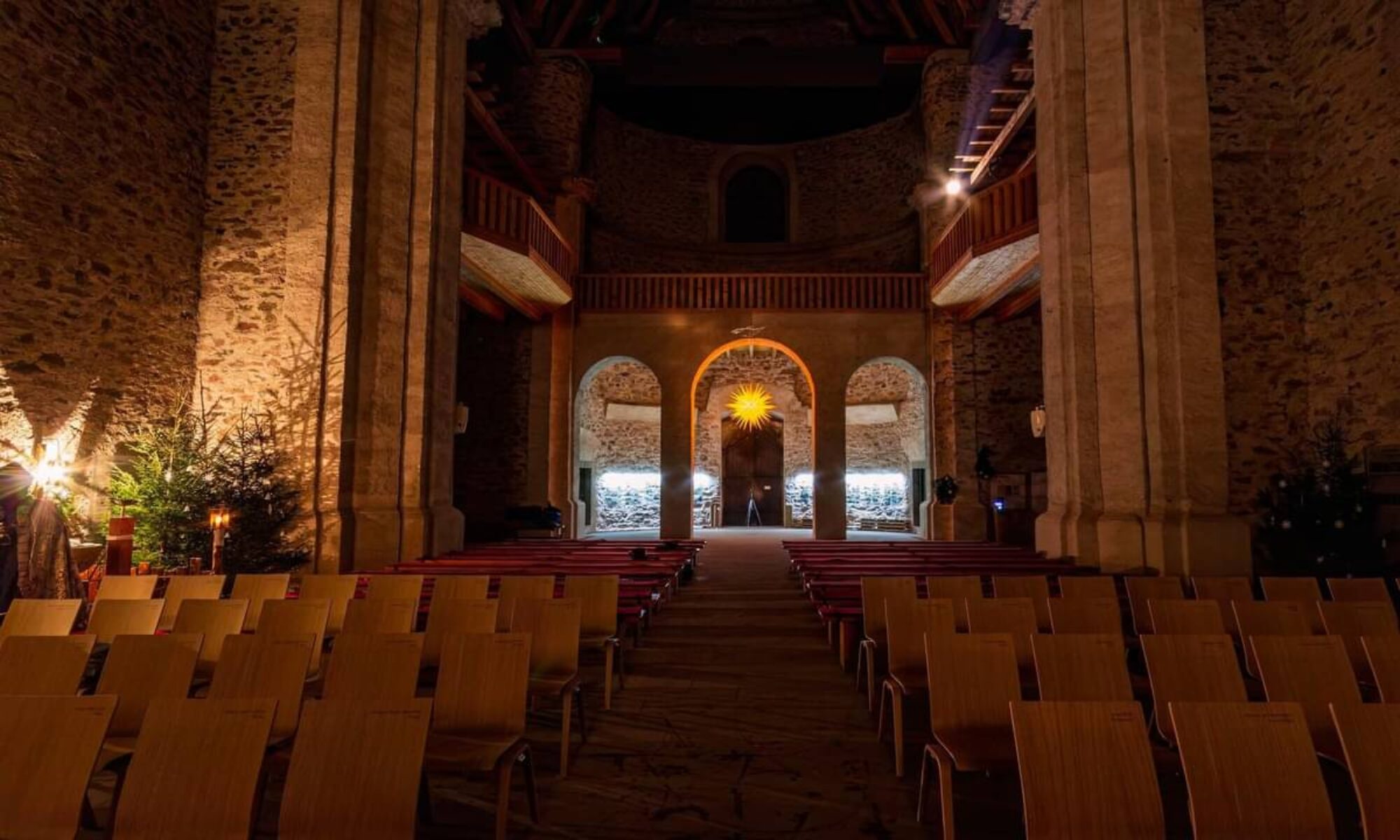The stars have fascinated humankind since time immemorial. The first human representation of the stars is as old as mankind itself. After all, astronomy is one of the oldest sciences. The significance of the stars and their movement in the sky has had practical significance in navigation, timekeeping and astrology. In addition, with the birth of Jesus Christ, the symbolic significance of the so-called Star of Bethlehem was added. And the connection between the star and the celebration of Christmas is still valid today.
Lands of the Bohemian Crown
The Church as an institution has been in existence since the late Roman Empire. More than a thousand years later, the Middle Ages were coming to an end, and one of the accompanying phenomena was a change in the Church’s previous position in society. One of the forerunners of the later Reformation was the Hussitism that arose in Bohemia. For two centuries there had been an environment of competition in the Bohemian lands in the area of faith. This made it easier to promote new approaches in various areas. One of these currents, based on a religious foundation, was the Unity of the Brethren. What is important for things to come is its emphasis on education. Then, when the defeat of the Bohemian Revolt and recatholization occurred at the beginning of the Thirty Years‘ War, many members of the Unity went abroad as religious exiles. One small group from the border of Moravia and Silesia made their way through Silesia to Saxony, or rather to its eastern part – Upper Lusatia. It was there that they found refuge and later also the support of the local lord. The church they founded (Moravian / Brethren) spread from the original donated village of Ochranov (Herrnhut) to millions of members all over the world, especially in German-speaking areas (Africa, America) within a century. The original village in Moravia was also German-speaking. My family also comes from this area and this story resonated with me all the more. Another coincidence is that the first parish of the Unity of the Brethren is located in the immediate vicinity of Neratov, where I donated the third paper star.

Herrnhut
What is important about the Moravian Church at the moment is not the religious aspect, but the relentless emphasis on education, especially mathematics. This may also explain the successful missionary work and its spread. The boarding schools and schools run by the church provided valid skills for the lives of the people. And it was at the boarding school in Niesky that the first paper star was created in 1821. It was a by-product of the teaching of geometry and its practical part. The base of the star was a polyhedron with 110 faces. The star was hung in the boarding school grounds and found its purpose among the pupils separated from their families over Christmas. They began to make them for themselves and their families as a mutual bond. To invent such a star required mathematical training and imagination. To make a star then required knowledge, precision and a large investment of time. As a graduate student in descriptive architecture, I was no stranger to any of this. But for ordinary people, even with instructions, dozens of hours of work would have presented an insurmountable barrier. And so, when P. H. Verbeek came up with a simplified model in 1897 that had only 26 faces and 25 points, the original star began to fall into oblivion. In 1925, moreover, the church founded a company that specialized in the production of stars. This company still exists today. During the company’s existence, many other products appeared, but it was the 25-pointed star that became practically the only significant item due to its practicality, simplicity and handsomeness. The technology changed and eventually moved from a metal core to spikes mounted to each other. In paper and plastic, in many colours and textures, in several sizes. Today, the annual sales of Herrnhuter Sterne GmbH reach 800,000 stars.

My paper stars
In 2018, when I was finishing my job at a local glass design company after four years since I arrived in Česká Lípa and started looking for a job in Architecture in Saxony (Upper Lusatia), I was lucky enough to find a job in one of the towns of the Upper Lusatian Six Towns, Bautzen. I studied architecture, but since I did not defend my thesis, I am not an architect. The daily commute through a landscape of Upper Lusatian houses was an interesting discovery for me. There are a lot of themes that affect people here. First you start to notice the differences. But it was the first December that made the biggest impression on me. For the vast majority of the picturesque Upper Lusatian houses were suddenly adorned with something – completely unknown to me until then – the Moravian star. I immediately had to make it myself. The next Christmas I bought them for everyone in the family and I still enjoy them to this day. So as I was in a strange environment and the kids still weren’t coming, I gradually started to create the Scharz board game. Because of my nature, I tackled all areas including production. There wasn’t time for much else, there was still a lot of work to be done. In 2022, my daughter Julia was born. I arranged for German parental leave and thanks to that my wife and I started working part-time. In November 2023 I finally found the time to make the original version of the Moravian star. And it confirmed my assumption that it was better. Maybe even surpassed it. I immediately set about making a second one, this one modified. I lent the first one to a shop window in the town square. The second one I donated to the town of Česká Lípa. Although each required 40 hours of work, it was actually a joy. There were still two weeks left until Christmas and I realized that the star belonged in the church. So I started to make a third paper star, this time a double one – with a diameter of 1.6 m (63 inches). When I was halfway through, I started looking for a home for it. Since it was a gift, I didn’t anticipate any complications. But like so many times before, I was wrong. Finally, on December 22, I loaded the star with about half of the 110 spokes glued on (the only way it still fit in the car) and set off on a three-hour drive to the Eagle Mountains. It was here, in Neratov, where I had been only once before, that I found acceptance. Bonding under the temperature of the glue solidifying took a bit longer, but the result was a success. The disadvantage of such a star is that it cannot be easily taken away again. But mostly the time commitment would end the development just as it did 200 years ago. So the goal was right, the means not yet. But I was not going to give up and in January I started working on a version that would eliminate all the problems of this variant.

Julia
Cheap and assembled in an hour, with the possibility of disassembly. And preserve the final impression. These were the challenges I had to face. I gradually came up with two design solutions. One more robust, but with a sharp chamfer, and the other so elegant that even the small bands between the tips stopped bothering me. I gradually had three prototypes of the star made on a 3D printer. I eventually changed the number of spikes to 102 and reduced the diameter to 77 cm. The star contains a golden section and gradually found a solution to most of the small obstacles. With the first yellow prototype I tried to negotiate a cooperation with Herrnhuter Sterne. Unsuccessfully. I sent the white star to the manufacturer in order to get everything needed done so that customers would have the star in their hands this Christmas. With the red star I then tried to arrange cooperation with wholesalers. Unsuccessfully. Each of these failures has strengthened my resolve. I lowered the price to make the star available to as many people as possible, and instead of taking the easier route for me, I took the right route for the star. I then added a special Sofia star directly for the churches, which has a point of 170 and a diameter of 144 cm (57 inches). So here we are, at the beginning of summer, when nobody wants to deal with Christmas yet, in a company that has more important things to do, without influencers to help buy the project. But at the same time, here we are on Kickstarter with a star that deserves attention, has deep symbolic meaning and huge potential. It’s just a „new“ thing, and those are slow to take hold. Slower than tends to be sustainable. But that’s what determination, perseverance and faith are for.

More interesting details about the first half of the story are most easily provided by Wikipedia, especially the German one.
